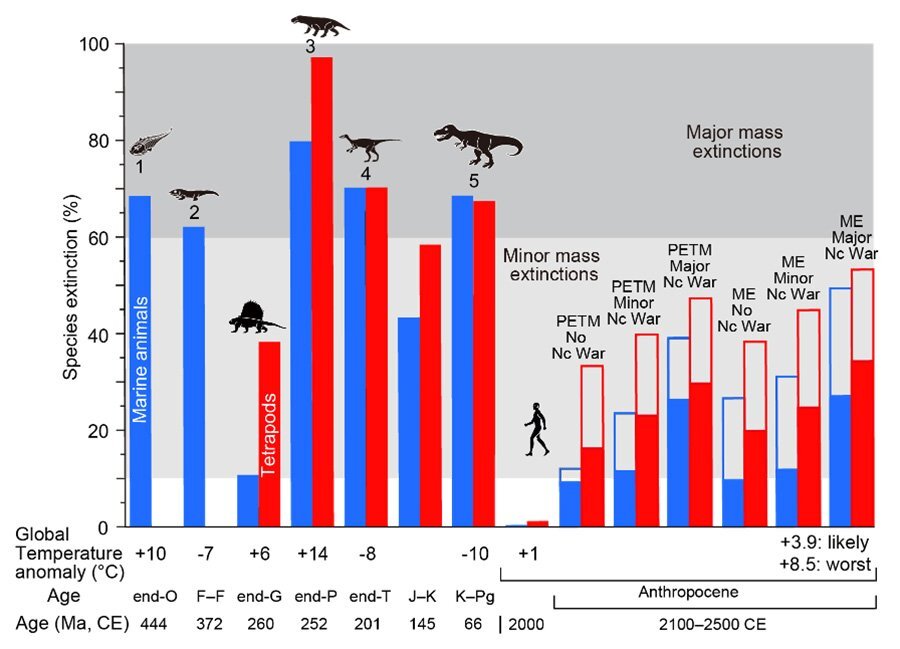NEWS
Limiting Animal Extinction Requires Preventing Environmental Deterioration and Nuclear War
A professor emeritus at Tohoku University has predicted future animal extinction magnitudes occurring between the years 2000-2500, finding that humans can take active steps to reduce the effects of current/future extinction events.
The research was published in the journal Scientific Reports on November 23, 2022.
There have been five major mass extinctions and some minor mass extinctions of animals since early animal diversification 540-520 million years ago. Some say that a sixth major mass extinction is already underway. But to date, the future extinction magnitude has not been quantitatively estimated.
Climate change, environmental pollution, deforestation, and reduced sunlight caused the mass extinctions that occurred in the Phanerozoic. The current/future extinction of animals is happening in conjunction with rapid global warming, pollution, and deforestation. Moreover, when a nuclear war is added to the equation, which leads to stratospheric soot forming and a subsequent reduction in sunlight and global cooling, all four causes of previous extinctions are active.
Professor Emeritus Kunio Kaiho demonstrated that when humans reduce greenhouse gas emissions, pollution, and deforestation - and do not start nuclear wars - from now until 2060-2080 CE, a 10-15% animal species loss will occur in ~2100 CE. However, when Kaiho modeled for no decreases or small escalations in nuclear war, this rose to a 20-30% or 20-40% animal species loss, respectively. Subsequently, the failure to prevent environmental deterioration, accompanied with a minor/major nuclear conflict, increases the animal species loss to 30-50%.
"Humans should stop not only industrial greenhouse gas emissions but also deforestation, environmental pollution, and nuclear war to prevent this mass extinction. When humans fail to stop these processes, significant losses in biodiversity and the human population and a collapse of ecological balance will occur on Earth," Kaiho said.
Looking ahead, Kaiho seeks to compare the effects of temperature anomalies, pollution, deforestation, and stratospheric soot on extinction magnitudes of past mass extinctions. Based on this, he will develop preventative measures of mass extinction.

Marine animal and terrestrial tetrapod species' extinction percentages corresponding to major and selected minor mass extinctions in the Phanerozoic with coincident global surface temperature anomalies. Numbers 1 to 5 represent the five major mass extinctions. The closed bars in the Anthropocene show the most-likely species extinction rate (%). The closed plus open bars in the Anthropocene show the worst-case scenario. Each silhouette shows a representative vertebrate animal from each age. ©Kunio Kaiho
Publication Details:
Title: Extinction magnitude of animals in the near future
Authors: Kunio Kaiho
Journal: Scientific Reports
DOI: 10.1038/s41598-022-23369-5
Contact:
Kunio Kaiho
Email: kunio.kaiho.a6 * tohoku.ac.jp (Replace * with @)




